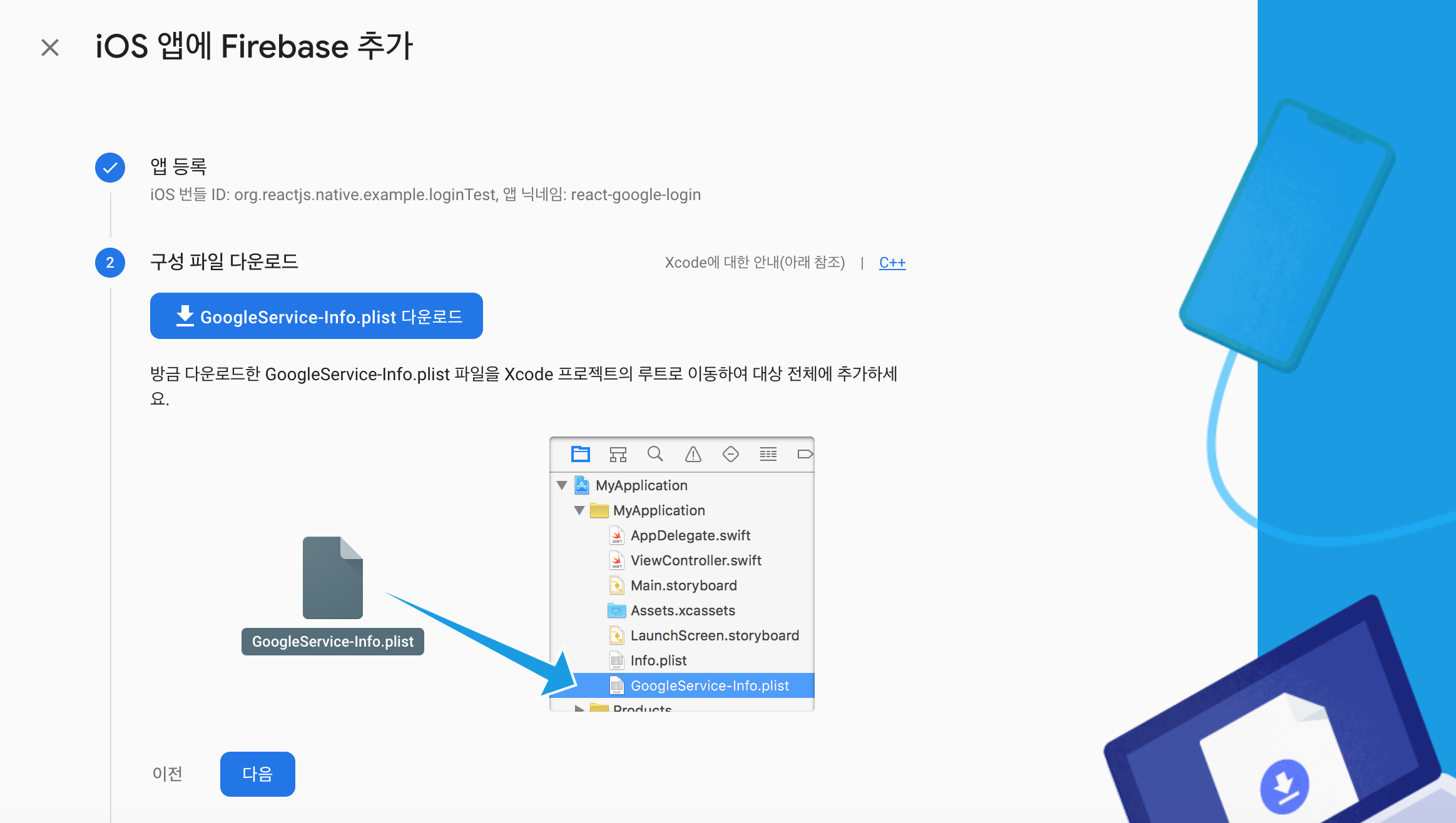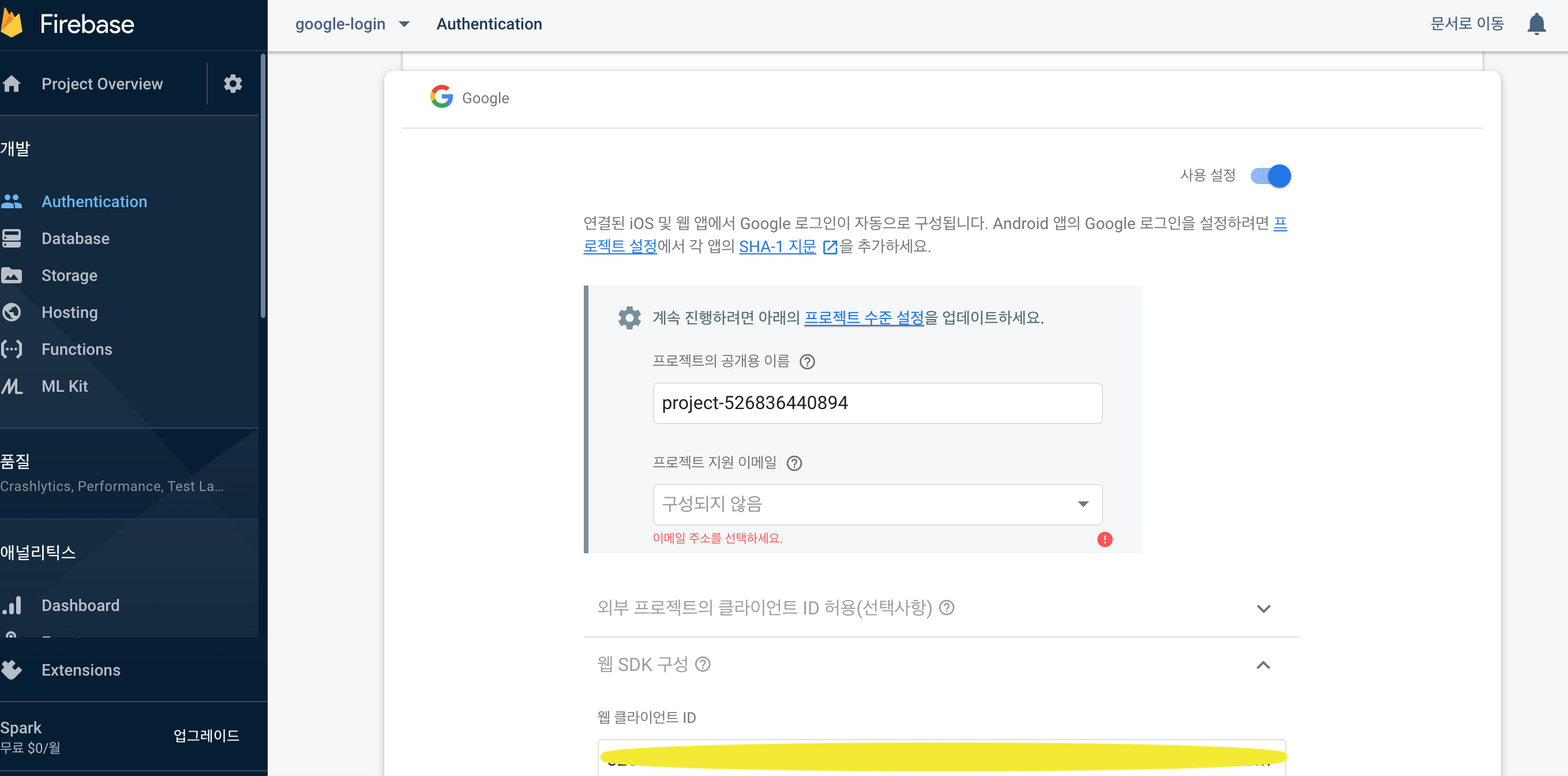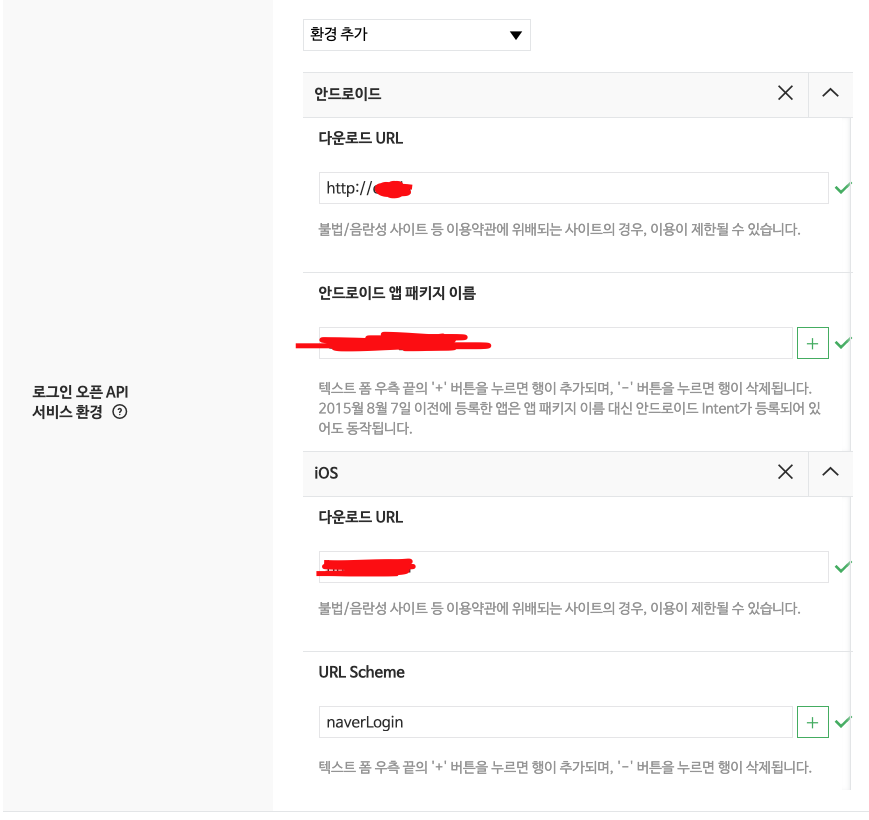1. 카카오
1) 이동
https://github.com/react-native-seoul/react-native-kakao-login
GitHub - react-native-seoul/react-native-kakao-login: react-native native module for Kakao sign in.
react-native native module for Kakao sign in. Contribute to react-native-seoul/react-native-kakao-login development by creating an account on GitHub.
github.com
2) 설치
yarn add @react-native-seoul/kakao-login
pod install3) ios 설정
- plist 설정
- URL Scheme 설정
- Legacy iOS SDK 불러오기
<key>CFBundleURLTypes</key>
<array>
+ <dict>
+ <key>CFBundleTypeRole</key>
+ <string>Editor</string>
+ <key>CFBundleURLSchemes</key>
+ <array>
+ <string>kakao{카카오 네이티브앱 아이디를 적어주세요}</string>
+ </array>
+ </dict>
</array>
<key>CFBundleVersion</key>
<string>1</string>
+ <key>KAKAO_APP_KEY</key>
+ <string>{카카오 네이티브앱 아이디를 적어주세요}</string>
+ <key>LSApplicationQueriesSchemes</key>
+ <array>
+ <string>kakaokompassauth</string>
+ <string>storykompassauth</string>
+ <string>kakaolink</string>
+ </array>
3.0.0 버전부터는 swift 버전의 kakao sdk를 활용하므로 Swift Bridging Header를 추가해야할 수 있습니다.
Xcode not automatically creating bridging header?
I imported an Obj-C file into my swift project and Xcode automatically prompted me to create a bridging header file as expected. However, I deleted both the files (moved to trash) to make some chan...
stackoverflow.com
AppDelegate.m 파일에 해당 부분을 추가해주세요. 이는 카카오톡 앱이 깔려 있을시 올바로 데이터를 받아오기 위함입니다 #193.

- Import
#import <RNKakaoLogins.h>
- Implementation
- (BOOL)application:(UIApplication *)app
openURL:(NSURL *)url
options:(NSDictionary<UIApplicationOpenURLOptionsKey,id> *)options {
if([RNKakaoLogins isKakaoTalkLoginUrl:url]) {
return [RNKakaoLogins handleOpenUrl: url];
}
return NO;
}
Project => Targets 아래 앱 선택 => General 탭으로 이동해서 Bundle Identifier가 본인의 카카오 앱과 동일한지 확인해주세요.
3) android 설정
1. 키해시 등록
keytool -exportcert -alias androiddebugkey -keystore ~./android/app/debug.keystore -storepass android -keypass android | openssl sha1 -binary | openssl base642. build.gradle(Project)
// Top-level build file where you can add configuration options common to all sub-projects/modules.
buildscript {
ext {
buildToolsVersion = "30.0.2"
minSdkVersion = 26
compileSdkVersion = 31
targetSdkVersion = 31
ndkVersion = "21.4.7075529"
kotlinVersion = '1.5.20'
}
repositories {
google()
mavenCentral()
}
dependencies {
classpath("com.android.tools.build:gradle:4.2.2")
classpath "org.jetbrains.kotlin:kotlin-gradle-plugin:$kotlinVersion"
}
}
allprojects {
repositories {
mavenCentral()
mavenLocal()
maven {
// All of React Native (JS, Obj-C sources, Android binaries) is installed from npm
url("$rootDir/../node_modules/react-native/android")
}
maven {
// Android JSC is installed from npm
url("$rootDir/../node_modules/jsc-android/dist")
}
google()
maven { url 'https://www.jitpack.io' }
maven { url 'https://devrepo.kakao.com/nexus/content/groups/public/' }
}
}
sdk 오류시 추가
maven { url 'https://devrepo.kakao.com/nexus/content/groups/public/' }
Manifest allowBackup을 true로 변경해주세요.
<application
android:name=".MainApplication"
android:allowBackup="true"Redirect URI 설정
<activity android:name="com.kakao.sdk.auth.AuthCodeHandlerActivity"
android:exported="true"
>
<intent-filter>
<action android:name="android.intent.action.VIEW" />
<category android:name="android.intent.category.DEFAULT" />
<category android:name="android.intent.category.BROWSABLE" />
<!-- Redirect URI: "kakao{NATIVE_APP_KEY}://oauth“ -->
<data
android:host="oauth"
android:scheme="kakao75a68583ee9691afa24c662d053fa10a" />
</intent-filter>
</activity>
----------------------------------------------------------------------------------------------------------------------
2. 구글
https://github.com/react-native-google-signin/google-signin
GitHub - react-native-google-signin/google-signin: Google Sign-in for your React Native applications
Google Sign-in for your React Native applications. Contribute to react-native-google-signin/google-signin development by creating an account on GitHub.
github.com
1. Firebase 프로젝트 생성
구글 로그인인증을 위해서 우선 새로운 Firebase 프로젝트와 그 안에 새로운 앱을 만들어줍니다.
1) 기존 Firebase 프로젝트가 없는 경우 Firebase 콘솔로 이동하여 이름을 지정하고 새 프로젝트를 생성합니다.

2) 새 앱을 만들어 프로젝트에 연결합니다.
프로젝트 대시보드에서 ios 버튼을 눌러 앱을 추가해보겠습니다.

앱 등록을 위해 시키는 대로 bundle_id와 앱 닉네임을 입력해줍니다.

다음 단계로 IOS

2. Firebase에서 Google 로그인 활성화
앱이 Firebase 프로젝트에 연결되었으므로 콘솔로 이동하여 앱이 Google 인증을 사용하도록 설정해야 합니다.
대시보드에 들어가서
Authentication → 로그인 방법 → Google에서 토글 버튼을 눌러 사용 설정을 활성화시켜줍니다.

웹 클라이언트 ID는 나중에 쓰이니 따로 저장해둡니다.
3. google 로그인 패키지 설치
Google 로그인을 활성화하기 위해 react-native-google-signin 패키지를 설치해야 합니다.
게시물을 작성할 당시 React-Native 버전 0.61이었습니다.
1) 패키지 설치
RN >= 0.60의 경우
yarn add @react-native-community/google-signinor
npm install -save @react-native-community/google-signin
RN <= 0.59의 경우
yarn add react-native-google-signinor
npm install -save react-native-google-signin
※ 버전이 0.59 이하일 경우 iOS guide 를 보고 설정을 더 해주셔야 합니다.
2) pod파일 설치
cd ios
pod install
3) Xcode 구성
XCode에서 아래 이미지에 표시된 것처럼 URL 스키마에 REVERSED_CLIENT_ID(GoogleService-Info.plist 파일 안에 있음)을 추가합니다.

4. react-native 앱에서 로그인 기능 적용
1) 컴포넌트 추가
import { GoogleSignin, GoogleSigninButton, statusCodes } from '@react-native-community/google-signin';
2) 로그인 configure 설정
YOUR_WEB_CLIENT_ID_HERE에 전에 발급받은 웹 클라이언트 ID를 입력합니다.
componentDidMount() {
GoogleSignin.configure({
webClientId: 'YOUR_WEB_CLIENT_ID_HERE',
offlineAccess: true,
hostedDomain: '',
forceConsentPrompt: true,
});
}
3) 로그인 버튼
<GoogleSigninButton
style={{ width: 192, height: 48 }}
size={GoogleSigninButton.Size.Wide}
color={GoogleSigninButton.Color.Dark}
onPress={this._signIn}
disabled={this.state.isSigninInProgress} />
4) 로그인 함수
_signIn = async () => {
try {
await GoogleSignin.hasPlayServices();
const userInfo = await GoogleSignin.signIn();
this.setState({ userInfo: userInfo, loggedIn: true });
} catch (error) {
if (error.code === statusCodes.SIGN_IN_CANCELLED) {
// user cancelled the login flow
} else if (error.code === statusCodes.IN_PROGRESS) {
// operation (f.e. sign in) is in progress already
} else if (error.code === statusCodes.PLAY_SERVICES_NOT_AVAILABLE) {
// play services not available or outdated
} else {
// some other error happened
}
}
};
5) 로그아웃 함수
signOut = async () => {
try {
await GoogleSignin.revokeAccess();
await GoogleSignin.signOut();
this.setState({ user: null, loggedIn: false }); // Remember to remove the user from your app's state as well
} catch (error) {
console.error(error);
}
};
6) 전체 코드
import React, { Component } from 'react';
import { SafeAreaView, StyleSheet, View, Text, StatusBar, Button, Image } from 'react-native';
import { GoogleSignin, GoogleSigninButton, statusCodes } from '@react-native-community/google-signin';
class App extends Component {
constructor(props) {
super(props);
this.state = {
pushData: [],
loggedIn: false
}
}
componentDidMount() {
GoogleSignin.configure({
webClientId: '526836440894-d7kvi3jfopuq06jaunnqp6s10r570jel.apps.googleusercontent.com',
offlineAccess: true,
hostedDomain: '',
forceConsentPrompt: true,
});
}
_signIn = async () => {
try {
await GoogleSignin.hasPlayServices();
const userInfo = await GoogleSignin.signIn();
this.setState({ userInfo: userInfo, loggedIn: true });
} catch (error) {
if (error.code === statusCodes.SIGN_IN_CANCELLED) {
// user cancelled the login flow
} else if (error.code === statusCodes.IN_PROGRESS) {
// operation (f.e. sign in) is in progress already
} else if (error.code === statusCodes.PLAY_SERVICES_NOT_AVAILABLE) {
// play services not available or outdated
} else {
// some other error happened
}
}
};
signOut = async () => {
try {
await GoogleSignin.revokeAccess();
await GoogleSignin.signOut();
this.setState({ user: null, loggedIn: false }); // Remember to remove the user from your app's state as well
} catch (error) {
console.error(error);
}
};
render() {
return (
<View>
<StatusBar barStyle="dark-content" />
<SafeAreaView>
<View style={styles.sectionContainer}>
<GoogleSigninButton
style={{ width: 192, height: 48 }}
size={GoogleSigninButton.Size.Wide}
color={GoogleSigninButton.Color.Dark}
onPress={this._signIn}
disabled={this.state.isSigninInProgress} />
</View>
<View style={styles.buttonContainer}>
{!this.state.loggedIn && <Text>You are currently logged out</Text>}
{this.state.loggedIn && <Button onPress={this.signOut}
title="Signout"
color="#841584">
</Button>}
</View>
{this.state.loggedIn && <View>
<View style={styles.listHeader}>
<Text>User Info</Text>
</View>
<View style={styles.dp}>
<Image
style={{ width: 100, height: 100 }}
source={{ uri: this.state.userInfo && this.state.userInfo.user && this.state.userInfo.user.photo }}
/>
</View>
<View style={styles.detailContainer}>
<Text style={styles.title}>Name</Text>
<Text style={styles.message}>{this.state.userInfo && this.state.userInfo.user && this.state.userInfo.user.name}</Text>
</View>
<View style={styles.detailContainer}>
<Text style={styles.title}>Email</Text>
<Text style={styles.message}>{this.state.userInfo && this.state.userInfo.user && this.state.userInfo.user.email}</Text>
</View>
<View style={styles.detailContainer}>
<Text style={styles.title}>ID</Text>
<Text style={styles.message}>{this.state.userInfo && this.state.userInfo.user && this.state.userInfo.user.id}</Text>
</View>
</View>}
</SafeAreaView>
</View>
);
}
}
const styles = StyleSheet.create({
listHeader: {
backgroundColor: '#eee',
color: "#222",
height: 44,
padding: 12
},
detailContainer: {
paddingHorizontal: 20
},
title: {
fontSize: 18,
fontWeight: 'bold',
paddingTop: 10
},
message: {
fontSize: 14,
paddingBottom: 15,
borderBottomColor: "#ccc",
borderBottomWidth: 1
},
dp:{
marginTop: 32,
paddingHorizontal: 24,
flexDirection: 'row',
justifyContent: 'center'
},
sectionContainer: {
marginTop: 32,
paddingHorizontal: 24,
flexDirection: 'row',
justifyContent: 'center'
},
buttonContainer: {
marginTop: 32,
paddingHorizontal: 24,
flexDirection: 'row',
justifyContent: 'center'
}
});
export default App;google 로그인 출처 :
[React-Native] 리액트 네이티브(react-native) 구글 로그인 연동하기
앱에서 사용자들이 간편하게 로그인할 수 있는 sns 로그인 연동은 필수인 것 같습니다. 저도 안드로이드로는 구글 로그인 연동을 해봤었는데 이번에 프로젝트를 진행하면서 리액트 네이티브로
bangc.tistory.com
----------------------------------------------------------------------------------------------------------------------
3. 페이스북
https://www.npmjs.com/package/react-native-fbsdk-next
react-native-fbsdk-next
Facebook SDK support for React Native apps.. Latest version: 7.3.3, last published: 14 days ago. Start using react-native-fbsdk-next in your project by running `npm i react-native-fbsdk-next`. There are 4 other projects in the npm registry using react-nati
www.npmjs.com
1. 설치
yarn add react-native-fbsdk-next
npm install --save react-native-fbsdk-next
2. 링크
React native 0.60 버전 이상이면 오토링크가 됩니다.
3. 설정
페이스북 developer 페이지를 따라서 프로젝트 설정을 해줘야 합니다.
developers.facebook.com/docs/facebook-login/android
Android - Facebook 로그인 - 문서 - Facebook for Developers
developers.facebook.com
드롭다운 메뉴에서 미리 등록해둔 앱을 선택하거나 새로운 앱을 만듭니다. 선택한 후에는 앱 ID가 표시된 것을 확인할 수 있습니다.

그 후 페이지에서 설명하는 내용들을 전부 프로젝트 내에 추가해줍니다.
build.gradle, strings.xml, AndroidManifest.xml 파일등이 수정됩니다. 문서 내의 4번 항목 (리소스 및 메니페스트 수정) 까지 진행하면 됩니다.


패키지 이름은 위처럼 AndroidManifest.xml 파일 내에서 확인할 수 있고, 기본 액티비티 클래스 이름의 경우 com.[패키지 이름].MainActivity와 같이 입력하면 됩니다.
다음 6번 항목은 키 발급입니다.
JDK의 keytool과 openssl이 필요합니다.
code.google.com/archive/p/openssl-for-windows/downloads
Google Code Archive - Long-term storage for Google Code Project Hosting.
code.google.com
JDK 폴더로 이동한 후, cmd창에서 다음 명령어를 실행해 줍니다.
keytool -exportcert -alias androiddebugkey -keystore "프로젝트경로\android\app\debug.keystore" | "openssl경로\openssl-0.9.8k_X64\bin\openssl" sha1 -binary | "openssl경로\openssl-0.9.8k_X64\bin\openssl" base64그러면 28자리의 해시된 키가 생성됩니다. 페이지 내에 입력하면 드디어 준비 끝입니다.
4. 코드 작성
react-native-fbsdk-next 에서 제공하고 있는 기본적인 로그인 예제 코드로 테스트 해 봅시다.
import React, { Component } from 'react';
import { View } from 'react-native';
import { LoginButton, AccessToken } from 'react-native-fbsdk-next';
export default class Login extends Component {
render() {
return (
<View>
<LoginButton
onLoginFinished={
(error, result) => {
if (error) {
console.log("login has error: " + result.error);
} else if (result.isCancelled) {
console.log("login is cancelled.");
} else {
AccessToken.getCurrentAccessToken().then(
(data) => {
console.log(data.accessToken.toString())
}
)
}
}
}
onLogoutFinished={() => console.log("logout.")}/>
</View>
);
}
};실제로 실행시켜보면 미리 디자인까지 되어 있는 로그인 버튼을 확인할 수 있습니다.
로그인이 성공적으로 되는 것을 확인했다면 사용자 프로필은 다음과 같이 가져올 수 있습니다.
import { Profile } from "react-native-fbsdk-next";
// ...
const currentProfile = Profile.getCurrentProfile().then(
function(currentProfile) {
if (currentProfile) {
console.log("The current logged user is: " +
currentProfile.name
+ ". His profile id is: " +
currentProfile.userID
);
}
}
);
페이스북 로그인 출처 :
[React Native] Facebook 연동 Login 적용하기 in 안드로이드
2021년 1월 19일부로 Facebook SDK에 대한 페이스북의 공식 support가 종료되었습니다. 이제부터는 커뮤니티에서 관리를 하고 있습니다. 아래 링크에서 확인할 수 있습니다. www.npmjs.com/package/react-native-..
jnj1.tistory.com
정리 잘되있는 곳
https://surprisecomputer.tistory.com/157
[React Native] Facebook SDK(react-native-fbsdk) 적용하기
1. 서론 저번 포스팅에서는 Firebase Analytics를 설정하는 법에 대해서 포스팅했다. 이번에는 마케터 분의 요청으로 Facebook SDK를 설정하게 됐다. 그렇게 어렵지는 않지만 File.swift 파일을 생성하는 부
surprisecomputer.tistory.com
결국 페이스북 디벨로퍼에서 시키는데로 IOS / Android 환경을 구성 하도록 한다.
4. 네이버 로그인
https://github.com/react-native-seoul/react-native-naver-login
GitHub - react-native-seoul/react-native-naver-login: 리엑트 네이티브 네이버 로그인 라이브러리
리엑트 네이티브 네이버 로그인 라이브러리. Contribute to react-native-seoul/react-native-naver-login development by creating an account on GitHub.
github.com
1. 라이브러리 설치
npm install @react-native-seoul/naver-login --save
or
yarn add @react-native-seoul/naver-loginios 의 경우 추가로 pod install을 수행하자.
cd ios && pod install && cd .. # CocoaPods on iOS needs this extra step2. 환경설정
ios 설정
- [info.plist] 파일 LSApplicationQueriesSchemes 항목에 아래 항목을 추가한다.
<key>LSApplicationQueriesSchemes</key>
<array>
<string>naversearchapp</string>
<string>naversearchthirdlogin</string>
</array>- [AppDelegate.m] 파일에 내용을 추가하자.
// for naver login
#import <NaverThirdPartyLogin/NaverThirdPartyLoginConnection.h>
. . .
- (BOOL)application:(UIApplication *)application
openURL:(NSURL *)url
options:(NSDictionary<UIApplicationOpenURLOptionsKey,id> *)options
{
. . .
// for naver login
if ([url.scheme isEqualToString:@"your_apps_urlscheme"]) {
return [[NaverThirdPartyLoginConnection getSharedInstance] application:application openURL:url options:options];
}
. . .
return YES;
}
- Podfile 에 내용을 추가한다.
pod 'naveridlogin-sdk-ios'- Xcode 를 열어 Url Schemes를 넣어주자.
project > target > info > 하단에 URL Types 부분에 아래 내용과 같이 네이버 개발자 앱 등록 시 입력한 URL Scheme 을 입력한다.
android 설정
안드로이드의 경우 별다른 설정은 없다.
- app/build.gradle file => defaultConfig 에 applicationId가 셋팅 되어 있는지 확인하자.
- Build 과정에서 WrongManifestParent 에러 발생 시 (로그에 나오는 대로)아래 코드를 app/build.gradle 에 추가해 준다.
android {
lintOptions {
checkReleaseBuilds false
// Or, if you prefer, you can continue to check for errors in release builds,
// but continue the build even when errors are found:
abortOnError false
}
}- 깃헙에는 필요하면 AndroidManifest.xml에 아래 코드를 넣어라는데.. 넣을 필요는 없다.
<activity
android:name="com.nhn.android.naverlogin.ui.OAuthLoginActivity"
android:screenOrientation="portrait"
android:theme="@android:style/Theme.Translucent.NoTitleBar" />
<activity
android:name="com.nhn.android.naverlogin.ui.OAuthLoginInAppBrowserActivity"
android:label="OAuth2.0 In-app"
android:screenOrientation="portrait" />3. 실제 사용
import React from "react";
import {
Alert,
SafeAreaView,
StyleSheet,
Button,
Platform
} from "react-native";
import { NaverLogin, getProfile } from "@react-native-seoul/naver-login";
const iosKeys = {
kConsumerKey: "naver client id",
kConsumerSecret: "naver secret id",
kServiceAppName: "테스트앱(iOS)",
kServiceAppUrlScheme: "testapp" // only for iOS
};
const androidKeys = {
kConsumerKey: "naver client id",
kConsumerSecret: "naver secret id",
kServiceAppName: "테스트앱(안드로이드)"
};
const initials = Platform.OS === "ios" ? iosKeys : androidKeys;
const App = () => {
const [naverToken, setNaverToken] = React.useState(null);
const naverLogin = props => {
return new Promise((resolve, reject) => {
NaverLogin.login(props, (err, token) => {
console.log(`\n\n Token is fetched :: ${token} \n\n`);
setNaverToken(token);
if (err) {
reject(err);
return;
}
resolve(token);
});
});
};
const naverLogout = () => {
NaverLogin.logout();
setNaverToken("");
};
const getUserProfile = async () => {
const profileResult = await getProfile(naverToken.accessToken);
if (profileResult.resultcode === "024") {
Alert.alert("로그인 실패", profileResult.message);
return;
}
console.log("profileResult", profileResult);
};
return (
<SafeAreaView style={styles.container}>
<Button
title="네이버 아이디로 로그인하기"
onPress={() => naverLogin(initials)}
/>
{!!naverToken && <Button title="로그아웃하기" onPress={naverLogout} />}
{!!naverToken && (
<Button title="회원정보 가져오기" onPress={getUserProfile} />
)}
</SafeAreaView>
);
};
const styles = StyleSheet.create({
container: {
flex: 1,
justifyContent: "space-evenly",
alignItems: "center"
}
});
export default App;4. 네이버 open api 신청
네이버 로그인을 위해선 당연히 api 신청이 필요하다.
- 먼저 약관 동의 하고

- 계정 정보를 등록한다.

- 다음은 애플리케이션 이름을 입력하고 사용 API 부분에 사용하려는 기능을 선택한다.

- 이후 로그인 오픈 API 서비스 환경에서 Android , Ios 를 추가한다.

빈 공간에 적당한 내용을 채운다. 마지막에 ios의 URL Scheme 부분은 추후 Xcode에 들어가는 환경설정에 필요한 내용이다.
네이버 로그인 출처 :
https://velog.io/@pcsnms/Naver-Login
[React Native] Naver Login
자 이번에는 네이버 로그인을 연동해보자. 관련 깃헙은 여기다.카카오톡 로그인과 마찬가지로 react-native-seoul 이 곳을 사용한다.ios 의 경우 추가로 pod install을 수행하자.
velog.io
Appdelegate.m 정리
#import "AppDelegate.h"
#import <React/RCTBridge.h>
#import <React/RCTBundleURLProvider.h>
#import <React/RCTRootView.h>
#import <FlipperKit/FlipperClient.h>
#import <FlipperKitLayoutPlugin/FlipperKitLayoutPlugin.h>
#import <FlipperKitUserDefaultsPlugin/FKUserDefaultsPlugin.h>
#import <FlipperKitNetworkPlugin/FlipperKitNetworkPlugin.h>
#import <SKIOSNetworkPlugin/SKIOSNetworkAdapter.h>
#import <FlipperKitReactPlugin/FlipperKitReactPlugin.h>
//카카오톡
#import <RNKakaoLogins.h>
// 페이스북
#import <FBSDKCoreKit/FBSDKCoreKit.h> // <- Add This Import
#import <React/RCTLinkingManager.h> // <- Add This Import
// 네이버
#import <NaverThirdPartyLogin/NaverThirdPartyLoginConnection.h>
// 여기서 주의할 점은 추가하는 모든 헤더들은 반드시 #ifdef FBSONARKITENABLED 위에 존재해야 한다는 것이다.
#ifdef FB_SONARKIT_ENABLED
static void InitializeFlipper(UIApplication *application) {
FlipperClient *client = [FlipperClient sharedClient];
SKDescriptorMapper *layoutDescriptorMapper = [[SKDescriptorMapper alloc] initWithDefaults];
[client addPlugin:[[FlipperKitLayoutPlugin alloc] initWithRootNode:application withDescriptorMapper:layoutDescriptorMapper]];
[client addPlugin:[[FKUserDefaultsPlugin alloc] initWithSuiteName:nil]];
[client addPlugin:[FlipperKitReactPlugin new]];
[client addPlugin:[[FlipperKitNetworkPlugin alloc] initWithNetworkAdapter:[SKIOSNetworkAdapter new]]];
[client start];
}
#endif
@implementation AppDelegate
- (BOOL)application:(UIApplication *)application didFinishLaunchingWithOptions:(NSDictionary *)launchOptions
{
#ifdef FB_SONARKIT_ENABLED
InitializeFlipper(application);
#endif
RCTBridge *bridge = [[RCTBridge alloc] initWithDelegate:self launchOptions:launchOptions];
RCTRootView *rootView = [[RCTRootView alloc] initWithBridge:bridge
moduleName:@"Base_ReactNative"
initialProperties:nil];
if (@available(iOS 13.0, *)) {
rootView.backgroundColor = [UIColor systemBackgroundColor];
} else {
rootView.backgroundColor = [UIColor whiteColor];
}
self.window = [[UIWindow alloc] initWithFrame:[UIScreen mainScreen].bounds];
UIViewController *rootViewController = [UIViewController new];
rootViewController.view = rootView;
self.window.rootViewController = rootViewController;
[self.window makeKeyAndVisible];
//페이스북 로그인
[[FBSDKApplicationDelegate sharedInstance] application:application
didFinishLaunchingWithOptions:launchOptions];
// 네이버 로그인
[[NaverThirdPartyLoginConnection getSharedInstance] setIsNaverAppOauthEnable:YES];
return YES;
}
// sns 로그인 관련
- (BOOL)application:(UIApplication *)app
openURL:(NSURL *)url
options:(NSDictionary<UIApplicationOpenURLOptionsKey,id> *)options {
// 카카오
if([RNKakaoLogins isKakaoTalkLoginUrl:url]) {
return [RNKakaoLogins handleOpenUrl: url];
}
// 페이스북
if ([[FBSDKApplicationDelegate sharedInstance] application:app openURL:url options:options]) {
return YES;
}
if ([RCTLinkingManager application:app openURL:url options:options]) {
return YES;
}
// 네이버
if ([url.scheme isEqualToString:@"your_apps_urlscheme"]) {
return [[NaverThirdPartyLoginConnection getSharedInstance] application:app openURL:url options:options];
}
return NO;
}
// sns 로그인 관련
- (NSURL *)sourceURLForBridge:(RCTBridge *)bridge
{
#if DEBUG
return [[RCTBundleURLProvider sharedSettings] jsBundleURLForBundleRoot:@"index" fallbackResource:nil];
#else
return [[NSBundle mainBundle] URLForResource:@"main" withExtension:@"jsbundle"];
#endif
}
@end'React Native' 카테고리의 다른 글
| typeScript ) 자식에게 함수 전달. (0) | 2022.09.19 |
|---|---|
| react native new Map() 컬랙션 사용하기 (0) | 2022.09.15 |
| RN 프로젝트 이름 변경 (0) | 2022.03.14 |
| react native function Back Button 처리 (0) | 2022.03.14 |
| 투명 스크린 만들기 (0) | 2022.01.26 |
